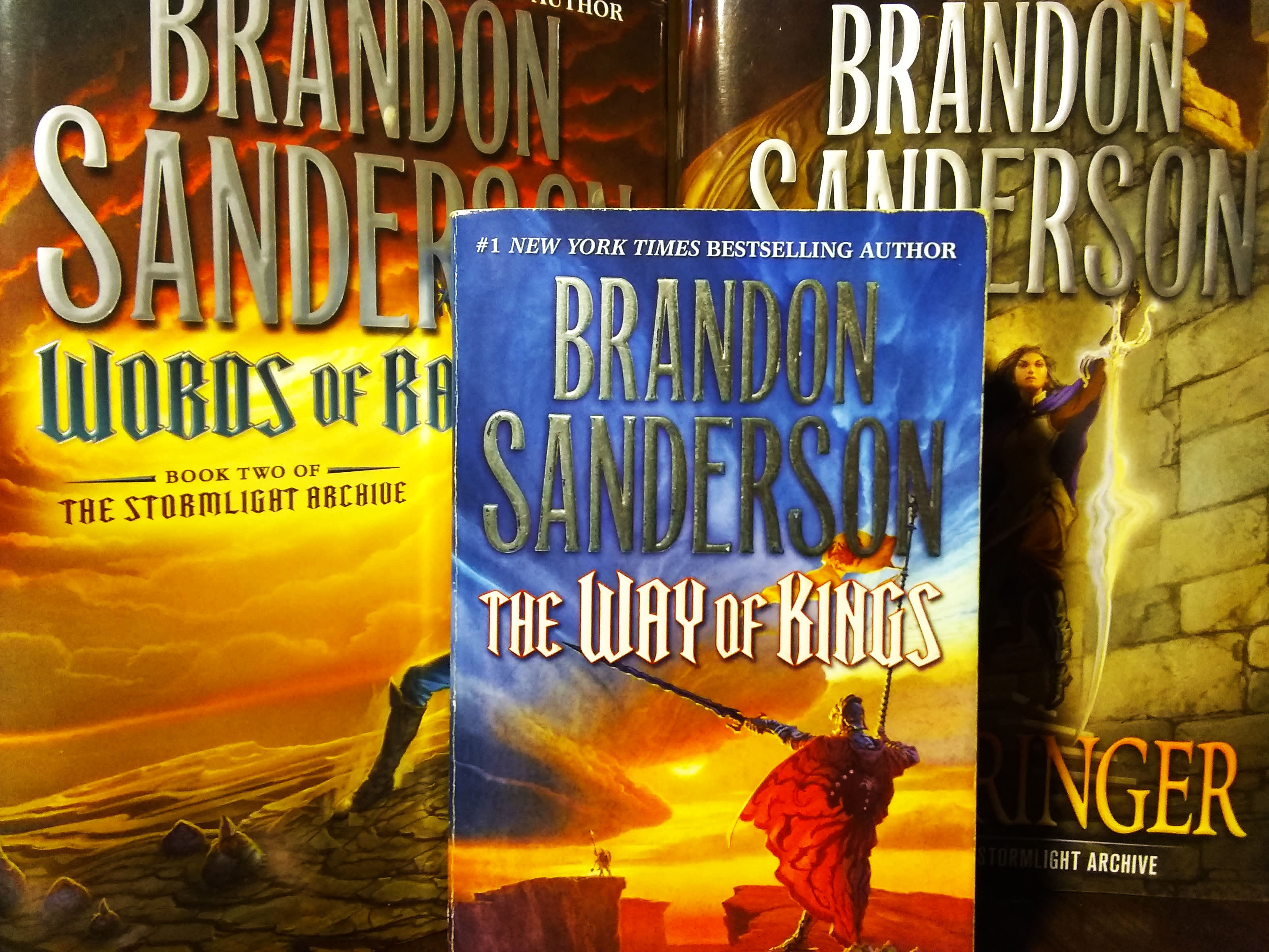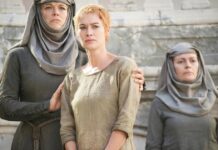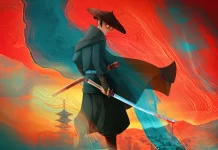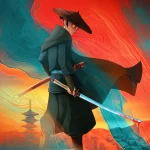Rhythm of War expands fans’ understanding of the cosmere, yet it’s still the most intimate and powerful book in The Stormlight Archive so far.
Let’s just get this out of the way right up front: Rhythm of War, the fourth installment in Brandon Sanderson’s Stormlight Archive series, is awesome. That should pretty much go without saying. This far into an enormous series like Stormlight, the chances are pretty good that you already know whether it’s your cup of tea or not. You either like enormous epic fantasy yarns like these…or, I don’t know, you read Nora Roberts?
The point is that none of us should really be surprised by the fact that Brandon Sanderson has, yet again, put out an enormous book incredibly quickly (it’s only been three years since the last massive Stormlight novel, Oathbringer, hit shelves) or that said book is transcendent. What was surprising is how deeply personal and powerful Rhythm of War is…while also managing to bring in the most cosmere crossovers of any Sanderson novel to date. It’s the penultimate tale of the first five-book Stormlight arc, and it definitely feels like an epic conclusion is close at hand.
Some minor SPOILERS for Rhythm of War — and the greater cosmere — lie beyond.

First, let’s talk big picture. All of Brandon Sanderson’s adult epic fantasy novels are tied together in an imaginary universe called the cosmere. And I do mean a literal universe. The cosmere is broken up into different planetary systems, each with their own “gods” called Shards, or Vessels. (The Shard is the power, the Vessel is the being who wields it — still with me?).
Many of the gods have issues. There are 16 Shards in all, each meant to represent one of the underlying forces of the cosmere. Once, their power was all part of the same divine force known as Adonalsium. Now, however, they’re split to a few per planetary system. The forces of the Shards, which represent things like Ruin and Preservation (Mistborn) are supposed to work in tandem to bring balance to their respective planets…but things tend to not work out that way. Often, the Shards that represent more destructive forces devise nefarious ways to expand their influence until they throw their world out of whack and Brandon Sanderson has to write a book series about how it gets fixed. The magic systems for each world are also tied to their Shards.
If that all sounds a bit much to wrap your head around, don’t worry: you don’t need to understand the deep lore of the cosmere to still enjoy Rhythm of War. Sanderson has always done a great job of toeing that line between introducing hints for super fans and making each book and series he writes self-contained enough to be enjoyed by most newcomers.
But if searching for hints of yet more epic, behind-the-scenes things is your jam, as I suspect it is for many of us who are into these sorts of books…well, Rhythm of War is the book for you. This might be the first of Sanderson’s novels that really feels like it is about the greater cosmere. Yes, events are still for the most part focused on the war between the singers and Knights Radiant on Roshar…but the fact that there are other planets — and beings who want to travel between them — has never been more central to the plot. There are many, many nods to other cosmere worlds, such as epigraphs written by Harmony from Mistborn, the appearance of the magical sand from Taldain (White Sand), or the actual clear use of the color-based Breath magic from Warbreaker. And of course, Vasher/Zahel, Vivenna and the sentient sword Nightblood, also from Warbreaker, are all thoroughly intertwined in the plot of Roshar by now.
I wouldn’t go so far as to say that the cosmere is experiencing an Avengers-level crossover…but man is that possibility starting to feel close. As Wit says in this very book:
For years, I’ve had to make do with hints of illusions. Suggesting scenes. Leaving most to the imagination. Now, having the power to do more, I find it less satisfying.
Has any line from a fantasy book ever been more meta?
As for the little picture…
Sanderson once talked about how this fourth Stormlight book would recall the slightly slower pace and personal journeys of The Way of Kings, as opposed to the bombastically huge set-pieces in Words of Radiance or Oathbringer, and I found that he largely delivered on that promise. That isn’t to say that Rhythm of War doesn’t have huge, epic action sequences; it absolutely does. But there’s nothing on the scale of, say, the Battle for Thaylen Field that happened at the end of the last book.
Which, if I’m being honest, felt totally fine. You can’t have an enormous epic battle end every single book without it starting to feel predictable — and that is one thing Rhythm of War is not. Instead, Sanderson spends a large amount of time in the heads of his characters, digging through their lingering traumas. Mental health has always been a large part of The Stormlight Archive, and a big part of the magic of the Knights Radiant. As the spren Phendorana said in Oathbringer, “Life breaks us, Teft. Then we fill the cracks with something stronger.” In this case, magical powers.
But this is the first book that really feels like it’s about mental health in a major way. Shallan has developed multiple personalities to deal with the dark secrets of her past. Kaladin Stormblessed, the closest thing the series has to a stereotypical fantasy hero, suffers from chronic depression and battle shock.
How society deals with people with mental illnesses is a central theme of the novel explored through many different characters. Even the spren get in on it. Their treatment of “deadeyes” (spren who were mentally shattered by an ancient traumatic event called the Recreance) parallels Kaladin’s plotline of figuring out how best to help the mentally ill humans who have been locked away. We also see mental health and the treatment of “insanity” pop up among the Fused and the Heralds as well. It’s a long list.
All of this somehow makes Rhythm of War feel like both the most personal and the grandest cosmere book ever written. It’s an incredibly powerful story on many levels, and the ending — which includes a sequence Sanderson has been waiting almost two decades to write — is arguably the most beautiful of the entire Stormlight Archive to date. Also, unlike the previous three books, which each had a very self-contained ending, the end of Rhythm of War wraps up the book’s main plotlines while also delivering some crazy twists to finish on a massive cliffhanger. The Final Ten Days approach, and at the end, the cosmere will likely never be the same.
And we haven’t even talked about Navani Kholin, a previously minor point-of-view character whose scientific endeavors factor into Rhythm of War in a huge and supremely satisfying way. The book still focuses on fan favorites like Kaladin, Shallan, Dalinar and Adolin, of course, but Sanderson brings characters like the singer Venli and Navani to the forefront, to great effect.
Oh, and then there’s Shadesmar, the world of the spren, which gets explored in far more detail. And there’s all the artwork spread throughout the book, which greatly enhances immersion by giving readers a look at various spren, fabrials, and maps.
If I tried to list every great thing about Rhythm of War, I’d still be here by the time Book 5 is out. So, to summarize…Rhythm of War, the fourth book in Brandon Sanderson’s Stormlight Archive, is awesome. No surprise there, right?
To stay up to date on everything fantasy, science fiction, and WiC, follow our all-encompassing Facebook page and sign up for our exclusive newsletter.
Get HBO, Starz, Showtime and MORE for FREE with a no-risk, 7-day free trial of Amazon Channels



















![[Book Review] The Blade Itself (The First Law Trilogy) by Joe Abercrombie](https://bendthekneegot.com/wp-content/uploads/2018/01/1516047103_maxresdefault-218x150.jpg)
















